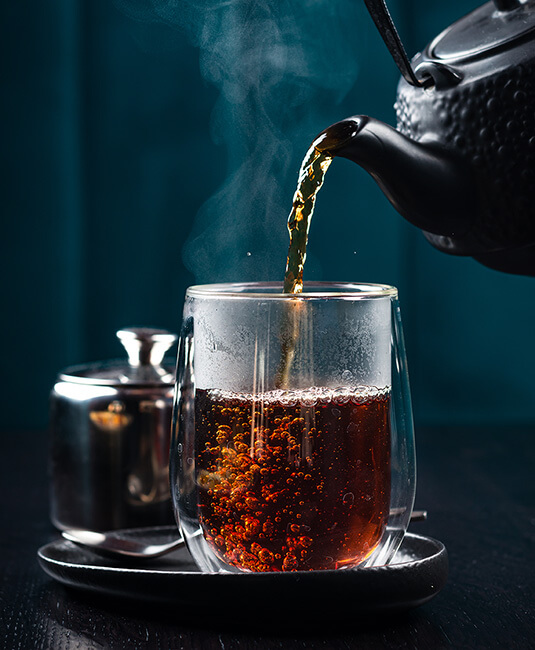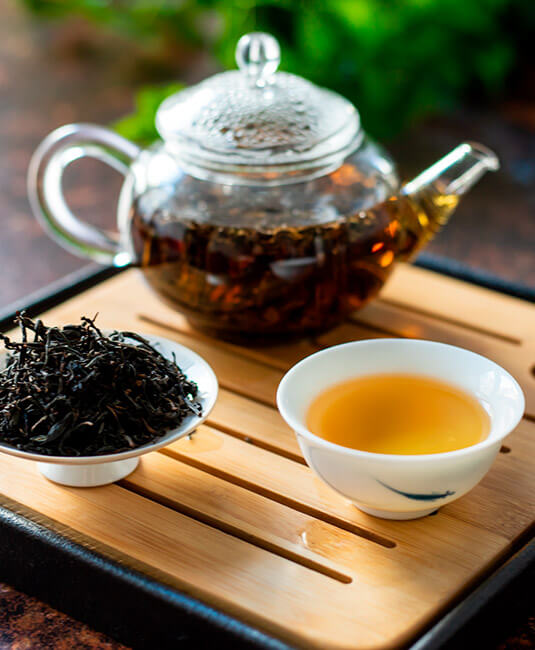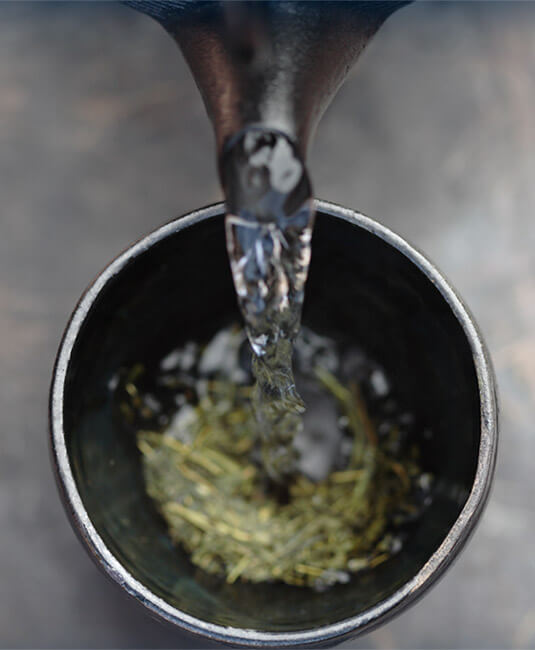
What is the difference between theine and caffeine?
Theine and caffeine are one in the same. Discovered in 1827 by the chemist Oudry, caffeine from tea was was called theine before being recognized as the same molecule as caffeine. Secreted by numerous plants as a defense system against parasites, this alkaloid can be found in roughly 60 plants like coffee and tea, but also cola, mate, guarana and cacao.
Caffeine owes its stimulant properties molecular structure similar to that of adenosine, a neuromodulator that inhibits certain excitatory neurotransmitters. By binding to different receptors, it impacts motor activity, the sleep cycle and alertness. These effects prove beneficial(mental and physical stimulation) with moderate doses as well as harmful with higher doses.
In a study published in 2017, researchers found that in Europe, the consumption of caffeine is stable and and lower than the recommendations of the EFSA, European Food Safety Authority. With the exception of Ireland and the United Kingdom where tea represents nearly 60 percent of caffeine intake, 40 to 94% of intake come from coffee.
Do theine and caffeine have the same effect on the body?
No. Even though caffeine and theine have a similar effect molecular structure, caffeine from tea is not absorbed in the same way as that from coffee. In fact, the other molecules present in tea((tannins and L-theanine) and to which they are linked delay its assimilation at an intestinal level. It is thus release more gradually over time into the blood and the brain. This differs greatly from the caffeine in coffee which provides an immediate boost by arriving quickly and suddenly in the blood.

What color of tea has the most theine?
The color of tea can be an unreliable indicator of caffeine and can vary based on factors such as origin, the method of cultivation, the degree of fermentation, etc.
However, we can generally say that white teas are those which contain the most theine (115 to 146 mg for a 300 ml cup) and black teas, oolong and Pu Ehr those which contain the least (52 to 77 mg for 300 ml). The contributions of different green teas vary greatly and can be very low (18 mg per 300 ml) or high (142 mg per 300 ml). For comparison, for the same volume of drink (300 ml), coffee has much higher caffeine contents: from 120 mg (arabica) to 230 mg (robusta).
This average must be put into perspective because theine content also depends on the variety of tea, its origin, the parts of the plant used and its oxidation levels. According to work published in 2007, it also varies depending on the temperature of the water and the infusion time. The hotter the water and the shorter the infusion time a tea has, the higher the caffeine content.
Do mate and matcha have more theine?
When ground to powder, matcha tea has a higher theine content than other teas since the entire leaf is consumed. 126 mg for 1.5 g of tea whipped with 100 ml of water.
On the contrary, mate, which grows from a tree other than the tea plant grown in South America (Yerba mate), has a caffeine content lower than that of tea. 30 mg for a 300 ml cup.
Does rooibos contain theine?
No. Even though it are sometimes called “red tea” due to its color, rooibos is not a tea but a completely caffeine-free South African plant. As such, they are considered more like herbal teas or infusions.

How to de-theine your tea?
It is very easy to “detheinate” your tea yourself without altering its flavor. The caffeine component in tea is first released in the first seconds of its infusion. To prevent its release, you simply rinse the tea first with simmering water that is then drained after 30 seconds. With this, 80% of the theine will be gone.
Furthermore, if you brew your tea at room temperature, it will be very low in theine. However, avoid detheinating a Grand Cru or a very aromatic tea, otherwise it will lose its bouquet.
There are other techniques that allow you to reduce the theine content in your tea by yourself:
- Increasing the infusion time. The longer the infusion time, the more tannins are released. Tannins give tea its strength but are also what reduce and slow down the assimilation of caffeine.
- Reuse tea multiple times. By the second cup, there is nearly no caffeine left.
